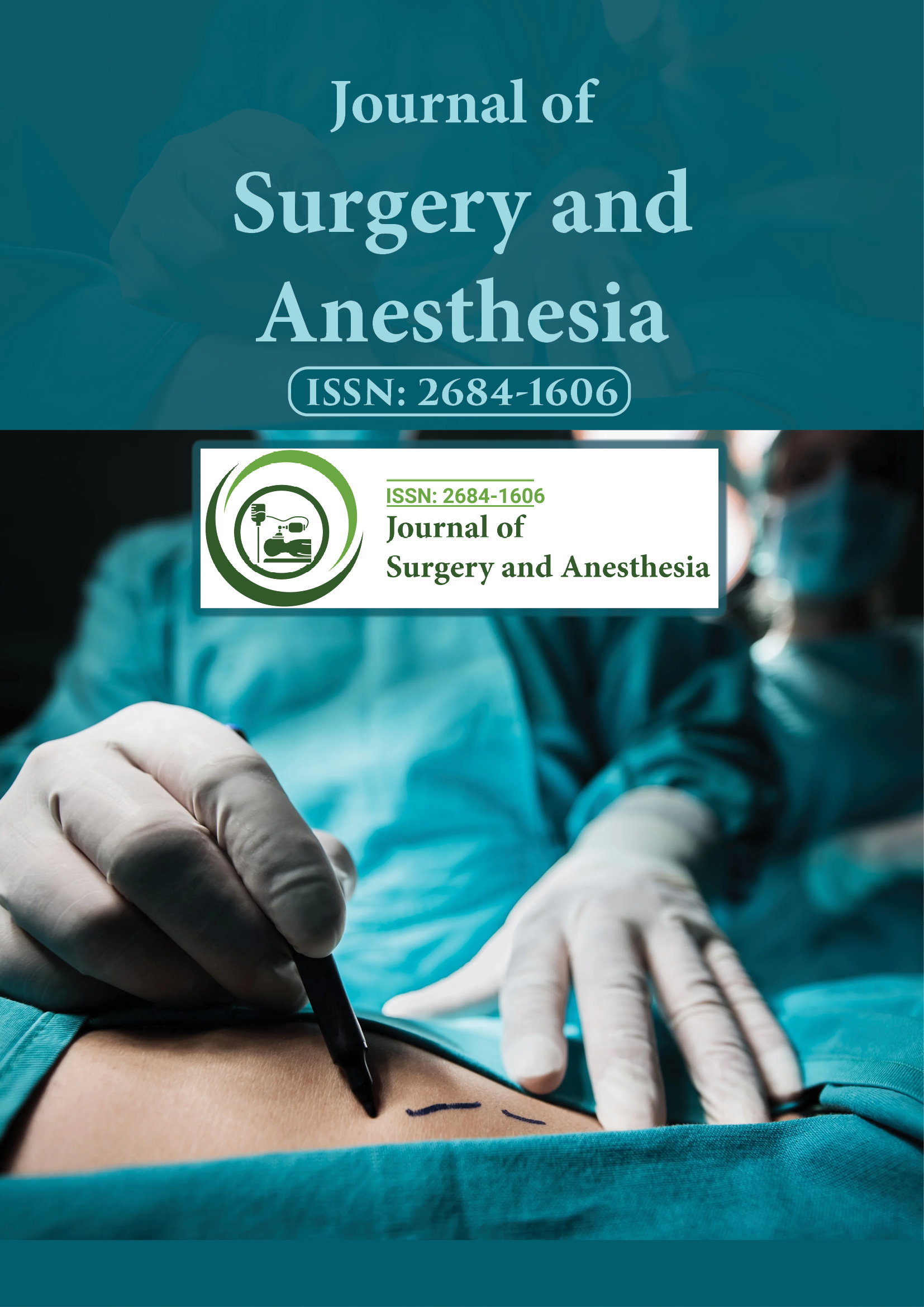Indexed In
- Google Scholar
Useful Links
Share This Page
Journal Flyer

Open Access Journals
- Agri and Aquaculture
- Biochemistry
- Bioinformatics & Systems Biology
- Business & Management
- Chemistry
- Clinical Sciences
- Engineering
- Food & Nutrition
- General Science
- Genetics & Molecular Biology
- Immunology & Microbiology
- Medical Sciences
- Neuroscience & Psychology
- Nursing & Health Care
- Pharmaceutical Sciences
Opinion Article - (2025) Volume 9, Issue 1
Improving Patient Outcomes through Postoperative Care
Jerry Jones*Received: 01-Mar-2025, Manuscript No. JSA-25-29048; Editor assigned: 03-Mar-2025, Pre QC No. JSA-25-29048 (PQ); Reviewed: 17-Mar-2025, QC No. JSA-25-29048; Revised: 24-Mar-2025, Manuscript No. JSA-25-29048 (R); Published: 31-Mar-2025, DOI: 10.35248/2684-1606.25.9.280
Description
Postoperative care is a critical component of surgical intervention that significantly influences patient outcomes, recovery trajectories, and healthcare resource utilization. It encompasses a comprehensive set of medical, physical, and psychological support measures aimed at ensuring safe recovery after surgery. The complexity of postoperative care depends on the type of surgery performed, the patient's baseline health, and intraoperative events. A structured, multidisciplinary approach to postoperative management can mitigate complications, expedite healing, and improve overall surgical success.
At the heart of postoperative care lies patient monitoring. Vital signs such as heart rate, blood pressure, oxygen saturation, temperature, and respiratory rate must be closely observed to detect early signs of complications such as hemorrhage, infection, deep vein thrombosis, or pulmonary embolism. Nurses, anesthesiologists, and surgical teams play pivotal roles in recognizing clinical deterioration and implementing timely interventions. Post-anesthesia recovery also demands vigilant surveillance due to residual effects of sedatives, opioids, and neuromuscular blockers, which can compromise respiratory function.
Pain management is another foundation of postoperative care. Effective pain control not only enhances patient comfort but also facilitates early ambulation, reduces pulmonary complications, and shortens hospital stay. Multimodal analgesia utilizing a combination of opioids, Non-Steroidal Anti-Inflammatory Drugs (NSAIDs), acetaminophen, and regional anesthesia techniques has emerged as a gold standard. This approach minimizes opioid-related adverse effects while providing adequate analgesia.
Infection prevention remains a paramount concern. Surgical Site Infections (SSIs) are among the most common postoperative complications and are associated with increased morbidity and healthcare costs. Strategies for reducing SSIs include appropriate antibiotic prophylaxis, maintenance of normothermia, optimal glucose control, and aseptic wound care. Education of both healthcare personnel and patients about proper wound hygiene and early warning signs can further enhance preventive efforts.
Postoperative nutrition plays a significant role in recovery, especially in patients undergoing major abdominal or oncologic surgery. Enhanced Recovery after Surgery (ERAS) protocols advocate for early oral feeding as it promotes gut motility, maintains mucosal integrity, and improves immune response. Malnourished patients or those unable to resume oral intake may require enteral or parenteral nutrition to meet metabolic demands during the healing phase.
The mobilization of patients in the postoperative period is essential to prevent complications such as deep vein thrombosis, atelectasis, and muscle wasting. Early ambulation, guided physical therapy, and pulmonary rehabilitation are integral to the recovery plan. Additionally, the use of mechanical prophylaxis like sequential compression devices and pharmacologic thromboprophylaxis based on risk stratification can further reduce thromboembolic risks.
Postoperative cognitive dysfunction and delirium, particularly in elderly patients, are often overlooked but can significantly delay recovery. Preoperative cognitive assessment, minimizing the use of deliriogenic medications, maintaining sleep hygiene, and early engagement in orientation activities are recommended preventive strategies. In select cases, collaboration with geriatric or neuropsychiatric specialists may be warranted.
Communication and continuity of care are important when transitioning patients from hospital to home or rehabilitation facilities. Clear discharge instructions, medication reconciliation, and follow-up plans must be in place to ensure patient safety. Incorporating caregivers in the recovery process and utilizing digital health tools such as tele monitoring and mobile health applications can support outpatient postoperative care and reduce readmission rates.
In conclusion, postoperative care extends beyond surgical closure and encompasses a holistic, patient-centered approach involving vigilant monitoring, effective pain control, infection prevention, nutritional support, early mobilization, and psychosocial care. Adherence to evidence-based guidelines and integration of interdisciplinary teams are essential to enhancing patient outcomes and advancing the standards of surgical recovery. As surgical techniques evolve and patient expectations rise, so must the scope and precision of postoperative care protocols.
Citation: Jones J (2025). Improving Patient Outcomes through Postoperative Care. J Surg Anesth. 9:280.
Copyright: © 2025 Jones J, et al. This is an open-access article distributed under the terms of the Creative Commons Attribution License, which permits unrestricted use, distribution, and reproduction in any medium, provided the original author and source are credited.
